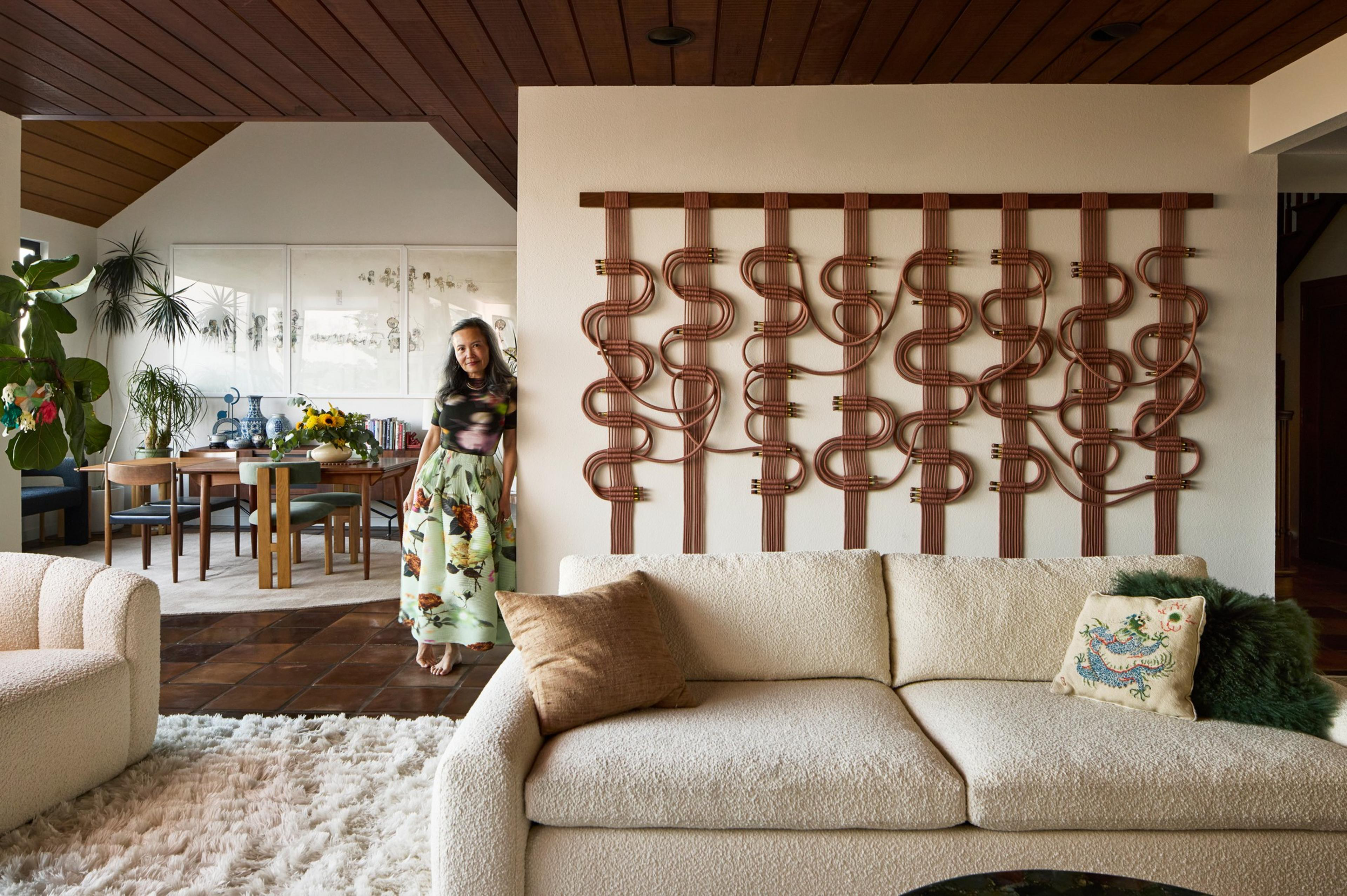Welcome to The Looker, a column about design and style from San Francisco Standard editor-at-large Erin Feher.
“When I walked through the door and saw the view, my first thought was, ‘We’re not the kind of people who get to have this,” says artist Windy Chien of the 6-foot-tall windows in the living and dining rooms that frame an expanse stretching from the fog-shrouded Golden Gate Bridge all the way to the San Bruno Mountains.
Indeed, it’s the kind of view typically found in penthouses priced in the eight figures. But somehow, Chien managed to snag this home for far, far less. “I wake up every day feeling so incredibly lucky that we get to live here.”
Chien — a sought-after textile sculptor and author of a book about the creative process, “The Year of Knots (opens in new tab)” — and her partner, the writer and filmmaker Gary Baker, stumbled onto this home two years ago. They had spent the previous decade in a petite Victorian in the Mission (opens in new tab) that they had lovingly fixed up, room by room.
But after 35 years in that neighborhood, and with an aging, firework-phobic greyhound, both felt that it was time for a change. With serenity in mind, they set a wide search radius, touring a handful of houses in the hills of Berkeley. “I didn’t really want to leave the city,” says Chien. “I was still in love with San Francisco.”
One day, she dropped “midcentury, San Francisco” into the Redfin search box. She hit the jackpot: a two-story, three-bedroom condo in quiet Clarendon Heights, with soaring, wood-paneled ceilings and panoramic views, that seemed at first glance to be solidly out of their league. But she saw that the unit had been on the market for more than four months, and a price reduction had bumped the asking price to just below $1.5 million. Chien believes people might have been spooked by the idea of an HOA, but for her and Baker, it was part of the appeal.
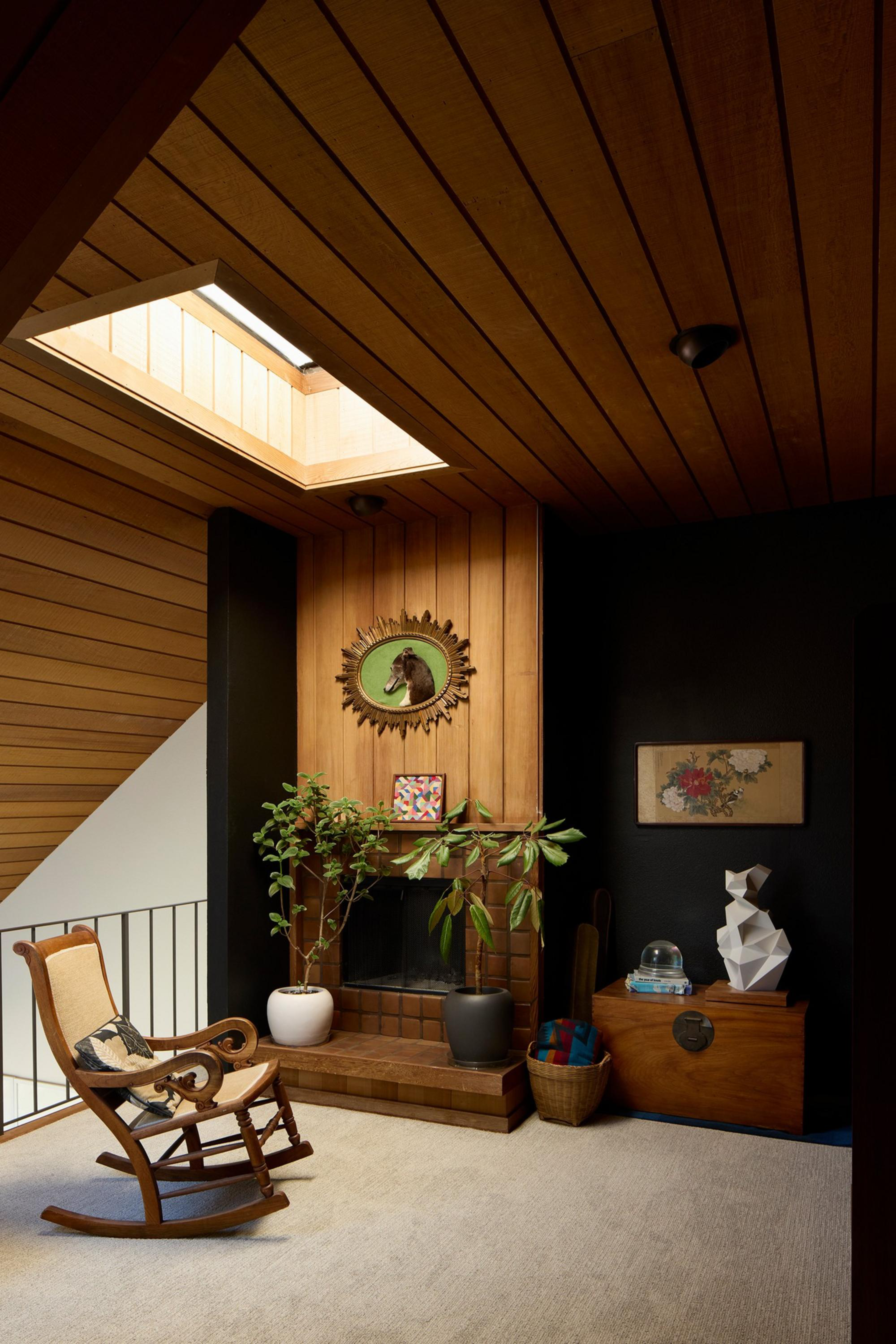

“We don’t have kids, so I want to create a community with my neighbors,” says Chien. “I want to have a reason to trust them and interact with them.”
As it turned out, another woman had a similar desire 50 years before. Barbara Sharfstein and her best friend were longtime Pan Am flight attendants when they decided to pool their resources and buy a one-acre plot of steep, undeveloped land at the base of Twin Peaks. They held onto it for nearly a decade until they finally found a developer willing to execute their vision: a cluster of 20 condos where the women — both single and without children — could live alongside friends, creating a geographic cluster of chosen family.
Sharfstein, who donned a hard hat to break ground on the development back in 1981, meticulously designed her own unit as the crown jewel. Hers was the only one with wood-paneled ceilings, a grand curving staircase, and a deep soaking tub and steam shower in the primary bath. Her views of the city were unparalleled.
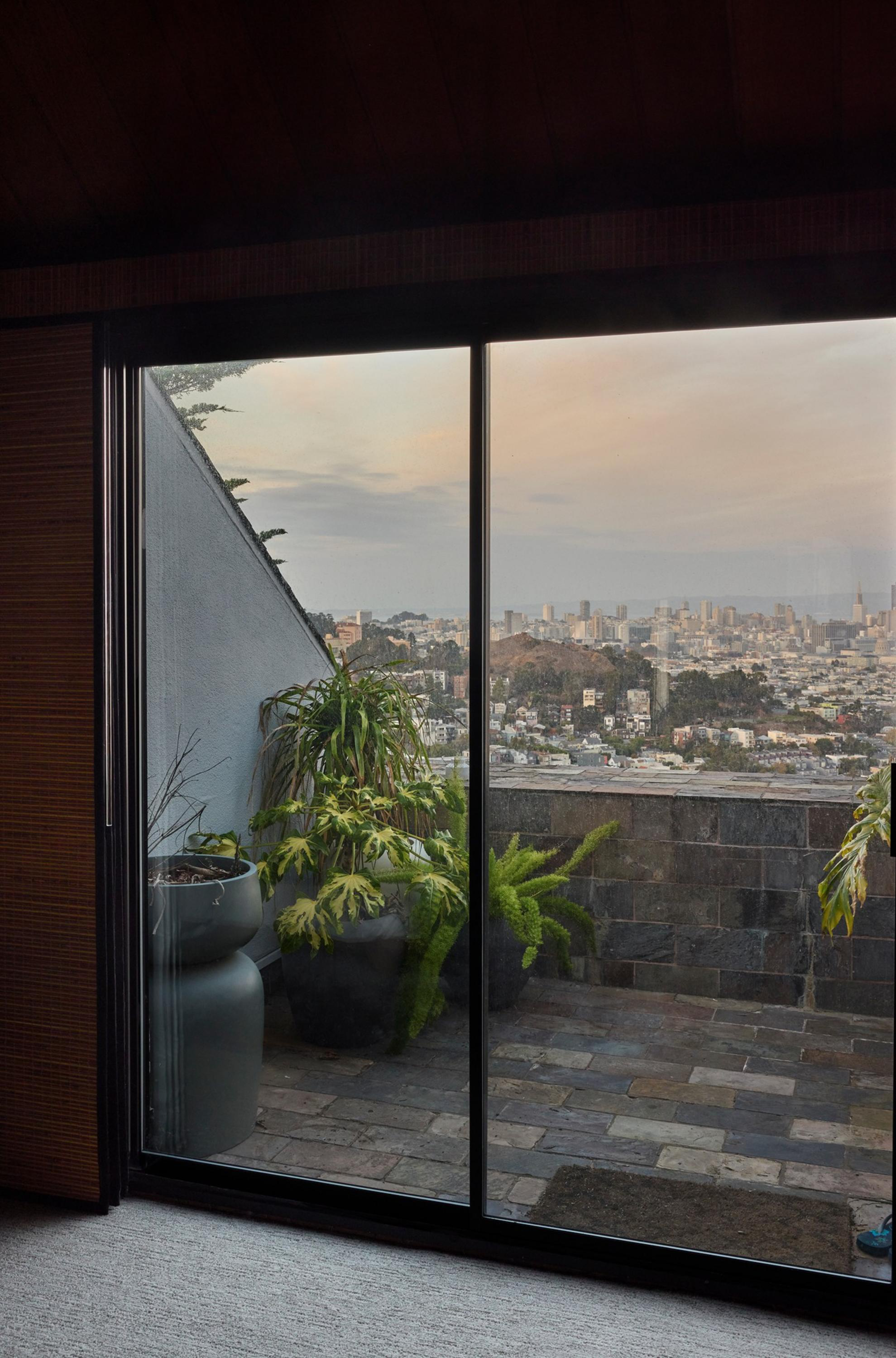
Sharfstein died in her home in 2022 at 92. A year later, Chien and Baker moved in, honoring the promise they made to retain its spirit when they purchased it from Sharfstein’s sister. Many of the development’s original residents, now in their 80s and 90s, still live there.
“Because this was her unit, it’s the most tricked-out of all of them. We barely did anything when we moved in,” says Chien. “It felt nearly perfect as it was.”
The few small changes included installing new tile around the hearth in the living room — a deep, glossy, forest-green subway tile from Heath Ceramics. (Chien has worked out of a large, sun-drenched studio in Heath’s Mission factory building since 2019.) They also painted the bedroom, which opens onto a stone-lined patio through sliding glass doors.
“I can’t believe I’m saying this, but before, the room was kind of too spacious,” says Chien, who painted the walls a smoky charcoal. “Painting it black made it really cozy.” One of her signature knotted artworks, “Linescape,” in deep-red cord, hangs above the bed.

The wall-to-wall carpet on the top floor was in such good shape that they decided to keep it, with the exception of the bathroom, which is lined in 1-inch-square tiles in various shades of khaki. “The bathroom is very ’80s-tastic,” Chien says enthusiastically. She filled a raised platform next to the soaking tub with a mini jungle’s worth of potted ferns and nestled a pair of vintage ceramic deer under the canopy.
The curving central stair, crowned with a skylight, is arguably the star of the home. Chien knotted a seven-panel work, “Parallax Hitching Post,” to wrap around its walls. The end of each piece of cord is wrapped in 24-karat-gold vintage kimono embroidery thread. “Its a tiny, little blingy moment you notice when you come up close,” says Chien.
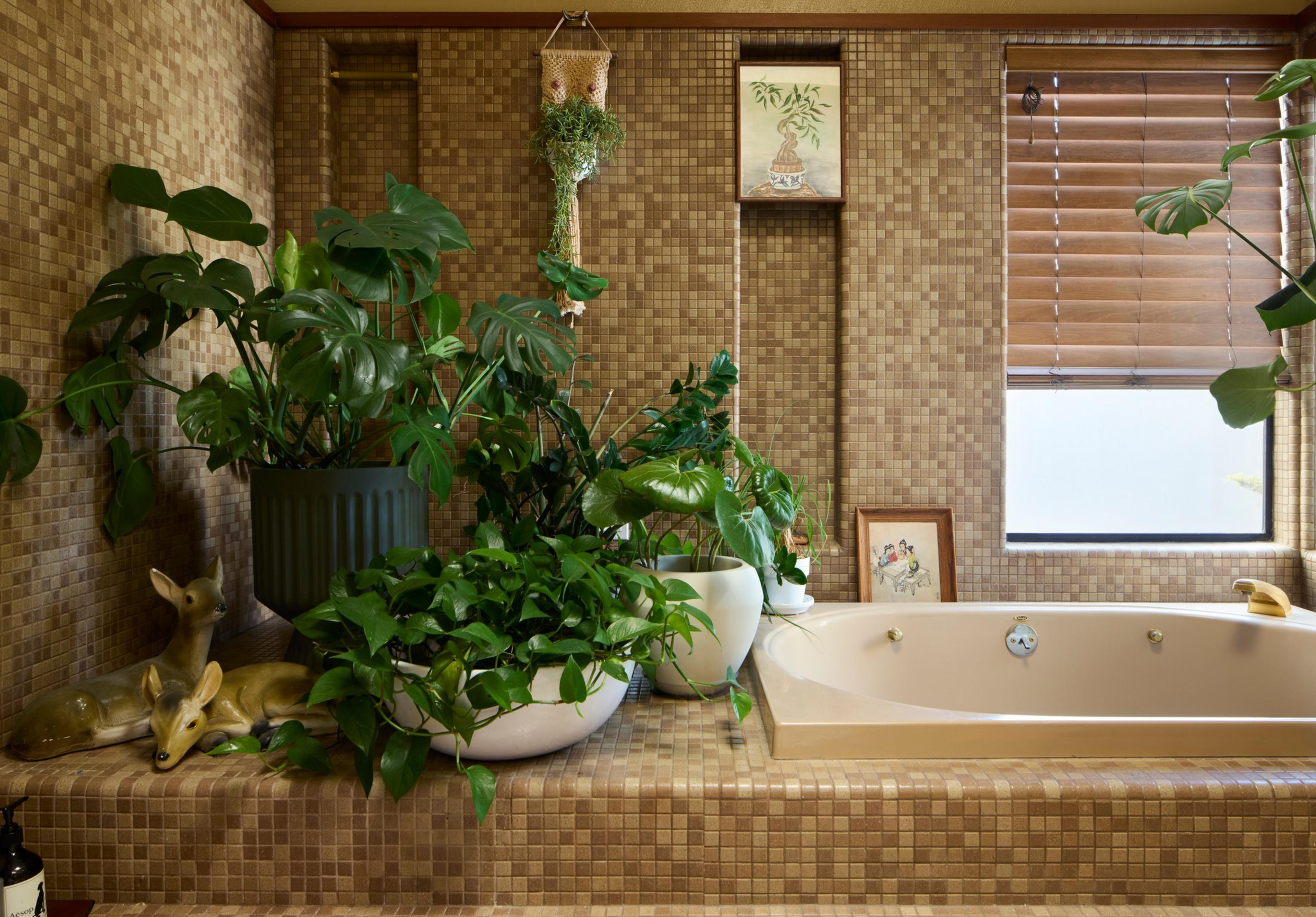
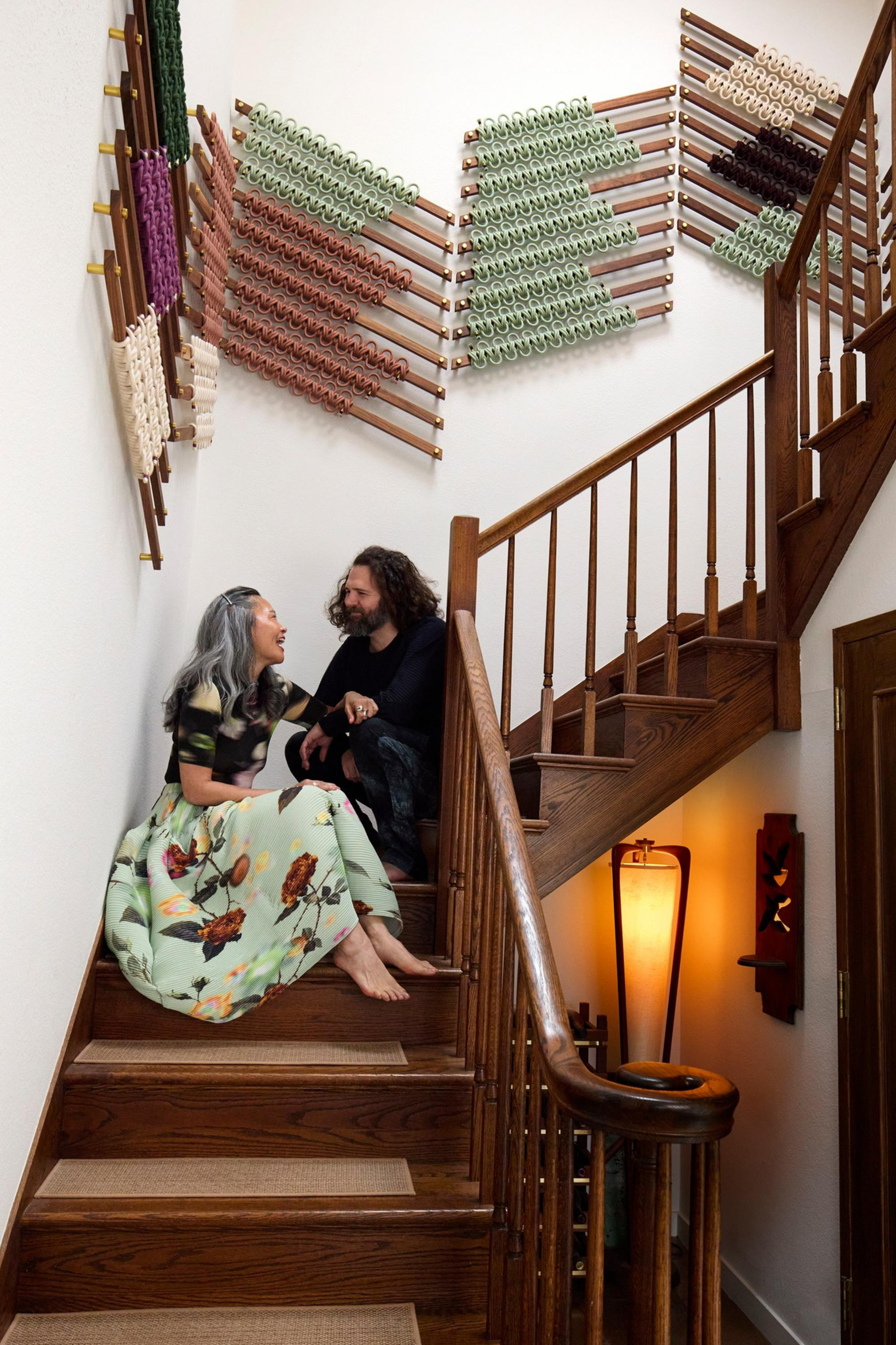
A third wall-spanning piece of hers, “Circuit Board,” hangs in the living room. Otherwise, the home is a veritable gallery of smaller works by fellow artists, including Jeremiah Maddock and Virgil Shaw, and at least a dozen intricate needlepoint pieces by Chien’s late grandmother, the original Winifred Chien, who immigrated to New York City in the 1950s from Taiwan.
Chien was also born in Taiwan, the daughter of a helicopter pilot in the U.S. military, but grew up in the States, “bouncing around like a typical Army brat.” She arrived at SF State for film school in 1989, finally setting down roots she had no intention of pulling up. She founded and ran Aquarius Records on Valencia Street for more than 10 years before Apple scooped her up as a music authority during its development of iTunes. She left Apple in 2013 with a desire for a more analog existence. She signed up for every makers course she could find, from woodworking to ceramics to macrame.
“My mom had taught me macrame in the ’70s, but I took the class because I couldn’t remember how to get started,” recalls Chien. “Within five minutes of this macrame refresher class, I was like, ‘I remember this. I love this.’”
She became dedicated to her practice, committing to learn one new knot a day for all of 2016. She shared the project on Instagram, and as soon as the year wrapped, book publishers started calling. She published “The Year of Knots” in 2017.
Now, her work is sought after by universities and tech companies, as well as high-end restaurants like Nobu and Via Aurelia, the new Mission Bay venture from the owners of Che Fico.
“I say that being an artist is my third life,” says Chien. She feels that her home marks yet another inspired chapter.

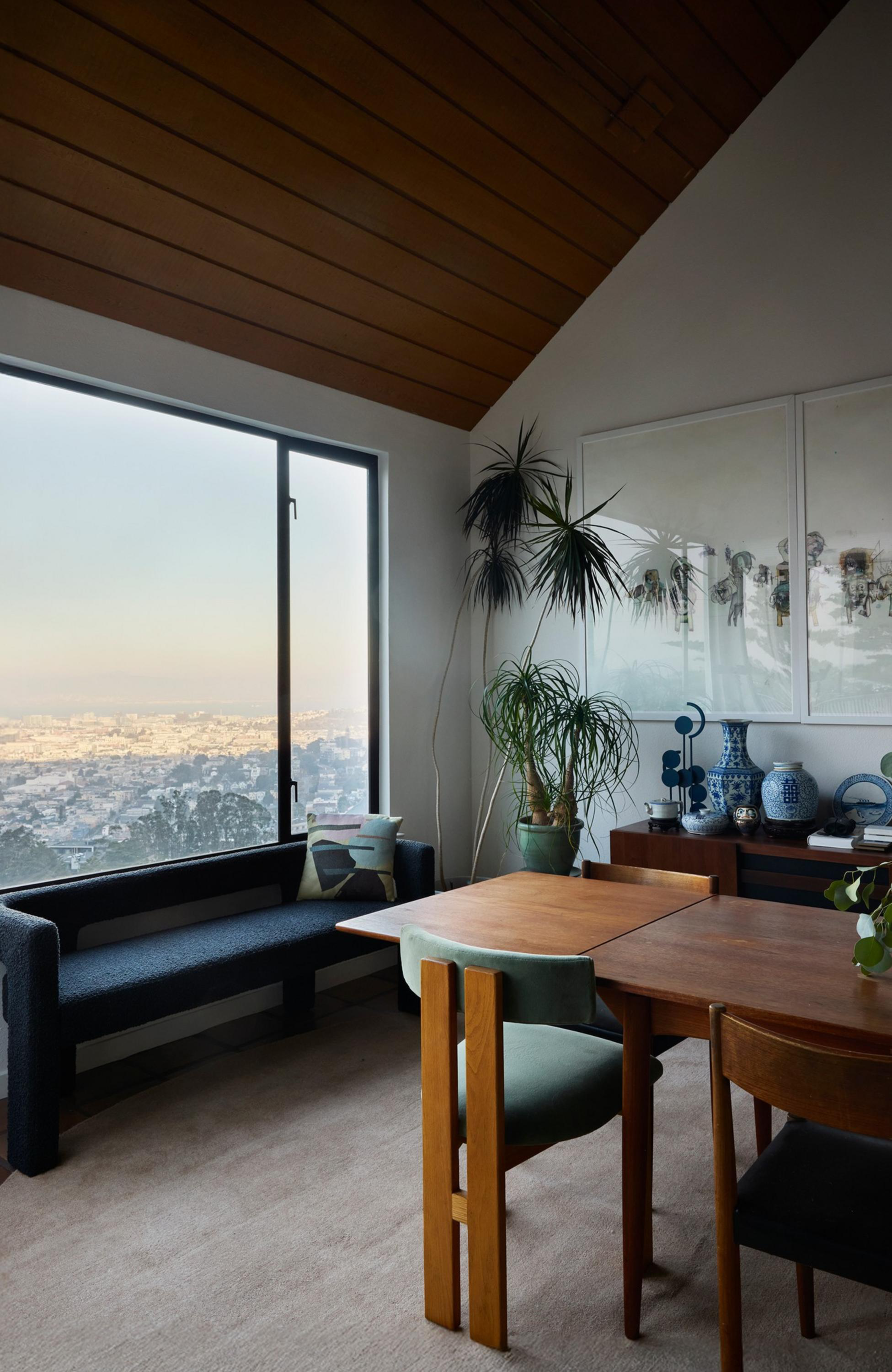
“I feel so in the flow right now. My work life and my home life are so integrated, and a big part of that is because I’m so happy here,” says Chien, who skipped putting her Mission Victorian on the market and instead sold it to a pair of artists at a discount. She knows artists can create great work in the city only if they are actually able to live here.
As a sort of cosmic thank you, Chien sits at her window every night and enjoys a video installation curated by San Francisco artistic legend Jim Campbell.
“I’d always heard that Jim Campbell programs the art at the top of Salesforce tower, but I never had a chance to look at it,” says Chien. “Having this kind of perspective on San Francisco reminds me how much I love it here.”

